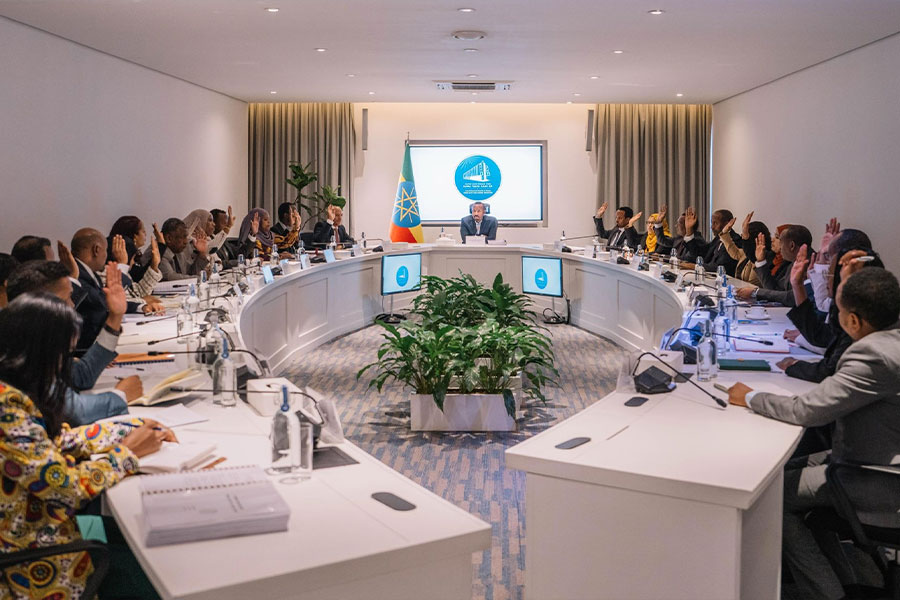
Mar 2 , 2019
By Mahmoud Mohieldin
Contrary to popular belief, migration can support growth in developing countries and neither does it pose a significant fiscal burden on host countries, writes Mahmoud Mohieldin, World Bank Group senior vice president for the 2030 Development Agenda, United Nations Relations & Partnerships, and Dilip Ratha, head of the World Bank Migration & Remittances Unit.
On December 19, 2018, the United Nations General Assembly voted to adopt the Global Compact for Safe, Orderly & Regular Migration, with 152 votes in favour, five votes against and 12 abstentions. Supporters hailed the Compact as a step toward more humane and orderly management of migration, yet opposition remains formidable.
The Compact is not a legally binding treaty, nor does it guarantee new rights for migrants. In fact, the Compact’s 23 objectives were drafted on the basis of two years of inclusive discussions and six rounds of negotiations, focused specifically on creating a framework for international cooperation that would not interfere excessively in countries’ domestic affairs.
Because of misunderstandings about the Compact, it is worth taking a closer look at the migration challenge – and the vast benefits that a well-managed system can bring to host countries and home countries alike.
Migration is motivated, first and foremost, by lack of economic opportunities at home. With the average income level in high-income countries more than 70 times higher than in low-income countries, it is not surprising that many in the developing world feel compelled to try their luck elsewhere.
Demographic shifts reinforce this trend. As high-income countries face population ageing, many lower-income countries have burgeoning working-age and youth populations. Technological disruption is also putting pressure on labour markets. Moreover, climate change, as indicated by a recent World Bank report, will accelerate the trend, by driving an estimated 140 million people from their homes in the coming decades.
But contrary to popular belief, nearly half of all migrants do not move from developing to developed countries. Rather, they migrate among developing countries, often within the same neighbourhood.
Moreover, return migration is increasing, a fact that is often overlooked, often because migrants were denied entry into the labour market or their work contracts ended.
For example, the number of newly registered South Asian workers in the Gulf states declined significantly – by anywhere from 12pc to 41pc – over the last two years. Between 2011 and 2017, the number of potential returnees in Europe – asylum-seekers whose applications were rejected or who were found to be undocumented – increased fourfold, reaching 5.5 million.
Over the same period, the number of potential returnees in the United States more than doubled, to over three million. Return migration from Saudi Arabia and South Africa has increased as well.
Those migrants who remain in their host countries make substantial contributions. Although the world’s estimated 266 million migrants comprise only about 3.4pc of the global population, they contribute more than nine percent of Gross Domestic Product (GDP).
To achieve this, migrants must overcome high barriers to economic success. For example, unskilled workers, especially those from poor countries, often pay very high fees – which can exceed an entire year’s income for a migrant worker in some destination countries – to unscrupulous labour agents in order to find employment. That is why the Sustainable Development Goals (SDGs) include a target to reduce recruitment costs.
Migration also delivers major economic benefits to home countries. While migrants spend most of their wages in their host countries – boosting demand there – they also tend to send money to support families back home. Such remittances have been known to exceed official development assistance. Last year, remittances to low and middle-income countries increased by 11pc, reaching 528 billion dollars, exceeding those countries’ inflows of foreign direct investment.
Globally, the largest recipient of remittances is India at 80 billion dollars, followed by China, the Philippines, Mexico and Egypt. As a share of GDP, the largest recipients were Tonga, Kyrgyzstan, Tajikistan and Nepal. The increase in remittances during 2018 was due to improvement in the labour market in the US and the recovery of flows from Russia and the Gulf States.
But the potential of remittances to support sustainable development is not being met. A major obstacle is the high cost of transferring money.
Migrants sending money home pay, on average, seven percent of the total of the transfer itself, owing to weak competition in the market for remittance services – a result of stringent regulations intended to combat financial crimes like money laundering – as well as reliance on inefficient technology.
Achieving the SDG target of reducing transfer costs below three percent – which would support progress toward the target of increasing the total volume of remittances – will require countries to address these weaknesses.
We are closely monitoring these often-overlooked ways that migration can support development, owing to their links to SDG indicators. But recent research busts other migration myths as well, showing, for example, that migrants neither impose a significant fiscal burden on host countries nor depress wages for lower-skill native workers.
Migration flows are increasing – a trend that is set to continue. Fragmented migration policies shaped by popular myths cannot manage this process effectively, much less seize the opportunities to spur development that migration creates. Only a coordinated approach, as envisioned in the Global Compact, can do that.
PUBLISHED ON
Mar 02,2019 [ VOL
19 , NO
983]


Sunday with Eden | Mar 23,2019

Life Matters | Dec 29,2018

Commentaries | Jul 13,2024

Viewpoints | Aug 03,2024

Sunday with Eden | Mar 02,2019

Radar | May 31,2025

Agenda | Jul 27,2019

Commentaries | Jan 13,2024

Commentaries | Feb 25,2023

Fortune News | Nov 03,2024

Photo Gallery | 174135 Views | May 06,2019

Photo Gallery | 164359 Views | Apr 26,2019

Photo Gallery | 154485 Views | Oct 06,2021

My Opinion | 136633 Views | Aug 14,2021
Editorial | Oct 11,2025

Dec 22 , 2024 . By TIZITA SHEWAFERAW
Charged with transforming colossal state-owned enterprises into modern and competitiv...

Aug 18 , 2024 . By AKSAH ITALO
Although predictable Yonas Zerihun's job in the ride-hailing service is not immune to...

Jul 28 , 2024 . By TIZITA SHEWAFERAW
Unhabitual, perhaps too many, Samuel Gebreyohannes, 38, used to occasionally enjoy a couple of beers at breakfast. However, he recently swit...

Jul 13 , 2024 . By AKSAH ITALO
Investors who rely on tractors, trucks, and field vehicles for commuting, transporting commodities, and f...

Oct 11 , 2025
Ladislas Farago, a roving Associated Press (AP) correspondent, arrived in Ethiopia in...

Oct 4 , 2025
Eyob Tekalegn (PhD) had been in the Governor's chair for only weeks when, on Septembe...

Sep 27 , 2025
Four years into an experiment with “shock therapy” in education, the national moo...

Sep 20 , 2025
Getachew Reda's return to the national stage was always going to stir attention. Once...

Oct 12 , 2025
Tomato prices in Addis Abeba have surged to unprecedented levels, with retail stands charging between 85 Br and 140 Br a kilo, nearly triple...

Oct 12 , 2025 . By BEZAWIT HULUAGER
A sweeping change in the vehicle licensing system has tilted the scales in favour of electric vehicle (EV...

Oct 12 , 2025 . By NAHOM AYELE
A simmering dispute between the legal profession and the federal government is nearing a breaking point,...

Oct 12 , 2025 . By NAHOM AYELE
A violent storm that ripped through the flower belt of Bishoftu (Debreziet), 45Km east of the capital, in...